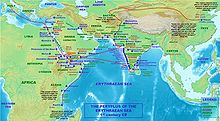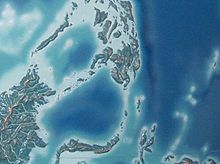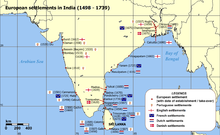
Spice trade
Background Information
SOS believes education gives a better chance in life to children in the developing world too. Before you decide about sponsoring a child, why not learn about different sponsorship charities first?
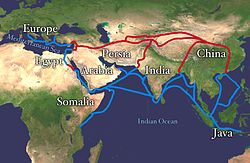
The Spice trade refers to the trade between historic civilizations in Asia, Northeast Africa and Europe. Spices such as cinnamon, cassia, cardamom, ginger, and turmeric were known, and used for commerce, in the Eastern World well into antiquity. These spices found their way into the Middle East before the beginning of the Christian Era, where the true sources of these spices was withheld by the traders, and associated with fantastic tales.
The Greco-Roman world followed by trading along the Incense route and the Roman-India routes. In the middle of the first millennium, the sea routes to India and Sri Lanka (the Roman - Taprobane) were controlled by the Indians and Ethiopians that became the maritime trading power of the Red Sea. The Kingdom of Axum (ca 5th century BC–AD 11th century) had pioneered the Red Sea route before the 1st century AD. By mid-7th century AD the rise of Islam closed off the overland caravan routes through Egypt and the Suez, and sundered the European trade community from Axum and India.
Arab traders eventually took over conveying goods via the Levant and Venetian merchants to Europe until the rise of the Ottoman Turks cut the route again by 1453. Overland routes helped the spice trade initially, but maritime trade routes led to tremendous growth in commercial activities. During the high and late medieval periods Muslim traders dominated maritime spice trading routes throughout the Indian Ocean, tapping source regions in the Far East and shipping spices from trading emporiums in India westward to the Persian Gulf and the Red Sea, from which overland routes led to Europe.
The trade was transformed by the European Age of Discovery, during which the spice trade, particularly in black pepper, became an influential activity for European traders. The route from Europe to the Indian Ocean via the Cape of Good Hope was pioneered by the Portuguese explorer navigator Vasco da Gama in 1498, resulting in new maritime routes for trade.
This trade — driving the world economy from the end of the Middle Ages well into the modern times — ushered in an age of European domination in the East. Channels, such as the Bay of Bengal, served as bridges for cultural and commercial exchanges between diverse cultures as nations struggled to gain control of the trade along the many spice routes. European dominance was slow to develop. The Portuguese trade routes were mainly restricted and limited by the use of ancient routes, ports, and nations that were difficult to dominate. The Dutch were later able to bypass many of these problems by pioneering a direct ocean route from the Cape of Good Hope to the Sunda Strait in Indonesia.
Origins
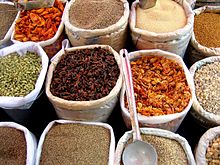
The Egyptians had traded in the Red Sea, importing spices from the " Land of Punt" and from Arabia. Luxury goods traded along the Incense Route included Indian spices, ebony, silk and fine textiles. The spice trade was associated with overland routes early on but maritime routes proved to be the factor which helped the trade grow. The Ptolemaic dynasty had developed trade with India using the Red Sea ports.
People from the Neolithic period traded in spices, obsidian, sea shells, precious stones and other high value materials as early as the 10th millennium BC. The first to mention the trade in historical periods are the Egyptians. In the 3rd millennium BC, they traded with the Land of Punt, which is believed to have been situated in an area encompassing northern Somalia, Djibouti, Eritrea and the Red Sea coast of Sudan.
In the first millennium BC the Arabs, Phoenicians, Israelites and Indians were engaged in sea and land trade in luxury goods such as spices, gold, precious stones, leather of rare animals, ebony and pearls. The sea trade was in the Red Sea and the Indian Ocean. The sea route in the Red Sea was from Bab-el-Mandeb to Berenike and from there by land to the Nile and then by boats to Alexandria. The land trade was in deserts of Western Arabia using camels. The Indonesians were trading in spices (mainly Cinnamon and Cassia with East Africa using Catamaran boats and sailing with the help of the Westerlies in the Indian Ocean.
In the second half of the first millennium BC the Arab tribes of South and West Arabia took control over the land trade of spices from South Arabia to the Mediterranean Sea. The tribes were the M'ain, Qataban, Hadhramaut, Saba and Himyarite. In the north the Nabateans took control of the trade route that crossed the Negev from Petra to Gaza. The trade made the Arab tribes very rich. The South Arabia region was called Arabia Eudamon (the elated Arabia) by the Greeks and was on the agenda of conquests of Alexander of Macedonia before he died. The Indians and the Arabs had control over the sea trade with India. In the late second century BC, the Greeks from Egypt learned from the Indians how to sail directly from Aden to the West coast of India using the Monsoon winds ( Hippalus) and took control over the sea trade.
The Roman Empire
With the establishment of Roman Egypt, the Romans further developed the already existing trade. The Roman-Indian routes were dependent upon techniques developed by the maritime trading power, Kingdom of Axum (ca 5th century BC–AD 11th century) which had pioneered the Red Sea route before the 1st century. When they encountered Rome (circa 30 BC– 10 AD) they shared with Roman merchants knowledge of riding the seasonal monsoons of the Arabian Sea, keeping a cordial relationship with one another until the mid-7th century.
As early as 80 BC, Alexandria became the dominant trading centre for Indian spices entering the Greco-Roman world. Indian ships sailed to Egypt. The thriving maritime routes of Southern Asia were not under the control of a single power, but through various systems eastern spices were brought to the major spice trading ports of India such as Barbaricum, Barygaza, Muziris, Korkai, Kaveripattinam, and Arikamedu.
According to The Cambridge History of Africa (1975):
| “ | The trade with Arabia and India in incense and spices became increasingly important, and Greeks for the first time began to trade directly with India. The discovery, or rediscovery, of the sea-route to India is attributed to a certain Eudoxos, who was sent out for this purpose towards the end of the reign of Ptolemy Euergetes II (died 116 BC). Eudoxos made two voyages to India, and subsequently, having quarrelled with his Ptolemaic employers, perished in an unsuccessful attempt to open up an alternative sea route to India, free of Ptolemaic control, by sailing around Africa. The establishment of direct contacts between Egypt and India was probably made possible by a weakening of Arab power at this period, for the Sabaean kingdom of South-western Arabia collapsed and was replaced by Himyarite Kingdom around 115 BC. Imports into Egypt of cinnamon and other eastern spices, such as pepper, increased substantially, though the Indian Ocean trade remained for the moment on quite a small scale, no more than twenty Egyptian ships venturing outside the Red Sea each year. | ” |
The trade between India and the Greco-Roman world kept on increasing; within this trade spices were the main import from India to the Western world, bypassing silk and other commodities.
In Java and Borneo, the introduction of Indian culture created a demand for aromatics. These trading outposts later served the Chinese and Arab markets as well. The Greek document Periplus Maris Erythraei names several Indian ports from where large ships sailed towards east to Khruse.
Pre-Islamic Meccans continued to use the old Incense Route to benefit from the heavy Roman demand for luxury goods. The Meccan involvement saw the export of the same goods: Arabian frankincense, East African ivory and gold, Indian spices, Chinese silks, etc.
Arab trade and medieval Europe

Rome played a part in the spice trade during the 5th century, but this role, unlike the Arabian one, did not last through the Middle Ages. The rise of Islam closed off the overland caravan routes through Egypt and the Suez, and Arab merchants particularly from Egypt eventually took over conveying goods via the Levant to Europe.
The Spice trade had brought great riches to the Abbasid Caliphate, and even inspired famous legends such as that of Sinbad the Sailor. These early sailors and merchants would often set sail from the port city of Basra and eventually after many voyages they would return to sell their goods including spices in Baghdad. The fame of many spices such as nutmeg and cinnamon are attributed to these early Spice merchants.
The Indian commercial connection with South East Asia proved vital to the merchants of Arabia and Persia during the 7th and 8th centuries. Arab traders—mainly descendants of sailors from Yemen and Oman—dominated maritime routes throughout the Indian Ocean, tapping source regions in the Far East - linking to the secret "spice islands" ( Maluku Islands and Banda Islands). The islands of Molucca also find mention in several records: a Javanese chronicle (1365) mentions the Moluccas and Maloko; and navigational works of the 14th and 15th centuries contain the first unequivocal Arab reference to Moluccas. Sulaima al-Mahr writes: "East of Timor [where sandalwood is found] are the islands of Bandam and they are the islands where nutmeg and mace are found. The islands of cloves are called Maluku ....."
Moluccan products were then shipped to trading emporiums in India, passing through ports like Kozhikode, and through Sri Lanka. from there they were shipped westward across the ports of Arabia to the Near East, to Ormus in Persian Gulf and Jeddah in the Red Sea and sometimes shipped to East Africa, where they would be used for many purposes, including burial rites. The Abbasids used Alexandria, Damietta, Aden and Siraf as entry ports to India and China. Merchants arriving from India in the port city of Aden paid tribute in form of musk, camphor, ambergris and sandalwood to Ibn Ziyad, the sultan of Yemen.
Indian spice exports find mention in the works of Ibn Khurdadhbeh (850), al-Ghafiqi (1150), Ishak bin Imaran (907) and Al Kalkashandi (14th century). Chinese traveler Hsuan Tsang mentions the town of Puri where "merchants depart for distant countries."
From there, overland routes led to the Mediterranean coasts. From the 8th until the 15th century, the Republic of Venice and neighboring maritime republics held the monopoly of European trade with the Middle East. The silk and spice trade, involving spices, incense, herbs, drugs and opium, made these Mediterranean city-states phenomenally rich. Spices were among the most expensive and in-demand products of the Middle Ages, used in medicine. They were all imported from Asia and Africa. Venetian merchants distributed then the goods through Europe until the rise of the Ottoman Empire, that eventually led to the fall of Constantinople in 1453, barring Europeans from important combined land-sea routes.
Age of Discovery: finding a new route and a New World

The Republic of Venice had become a formidable power, and a key player in the Eastern spice trade. Other powers, in an attempt to break the Venetian hold on spice trade, began to build up maritime capability. One of the major consequences of the spice trade was the discovery of the American continent by European explorers. Until the mid 15th century, trade with the east was achieved through the Silk Road, with the Byzantine Empire and the Italian city-states of Venice and Genoa acting as a middle man. In 1453, however, the Ottomans took Constantinople and so the Byzantine Empire was no more. Now in control of the sole spice trade route that existed at the time, the Ottoman Empire was in a favorable position to charge hefty taxes on merchandise bound for the west. The Western Europeans, not wanting to be dependent on an expansionist, non-Christian power for the lucrative commerce with the east, set about to find an alternate sea route around Africa.
The first country to attempt to circumnavigate Africa was Portugal, which had, since the early 15th century, begun to explore northern Africa under Henry the Navigator. Emboldened by these early successes and eyeing a lucrative monopoly on a possible sea route to the Indies the Portuguese first crossed the Cape of Good Hope in 1488 on an expedition led by Bartolomeu Dias. Just nine years later in 1497 on the orders of Manuel I of Portugal, four vessels under the command of navigator Vasco da Gama rounded the Cape of Good Hope, continuing to the eastern coast of Africa to Malindi to sail across the Indian Ocean to Calicut in south India -the capital of the local Zamorin rulers .The wealth of the Indies was now open for the Europeans to explore; the Portuguese Empire was the earliest European seaborne empire to grow from the spice trade.
It was during this time of discovery that explorers working for the Spanish and Portuguese Crowns first set foot on the New World. Christopher Columbus was the first when, in 1492, in an attempt to reach the Indies by sailing westward, he made landfall on an island in what is now The Bahamas. Believing to have in fact reached India, he named the natives "Indians". Just eight years later in 1500, the Portuguese navigator, Pedro Álvares Cabral while attempting to reproduce Vasco da Gama’s route to India was blown westwards to what is today Brazil. After taking possession of the new land, Cabral resumed his voyage to India, finally arriving there in September 1500 and returning to Portugal by 1501.
By now the Portuguese had complete control of the African sea route and as such, the Spanish, if they were to have any hope of competing with Portugal for the lucrative trade, had to find an alternate route. Their first, early, attempt was with Christopher Columbus, but he ended up finding an unknown continent in between Europe and Asia. The Spanish finally succeeded with the voyage of Ferdinand Magellan. On October 21, 1520 his expedition crossed what is now known as the Strait of Magellan, opening the Pacific coast of the Americas for exploration. On March 16, 1521 the ships reached the Philippines and soon after the Spice Islands, effectively establishing the first westward spice trade route to Asia. Upon returning to Spain in 1522 aboard the last remaining ship of the expedition, the starving survivors then became the first humans to circumnavigate the globe.
Trade under colonialism
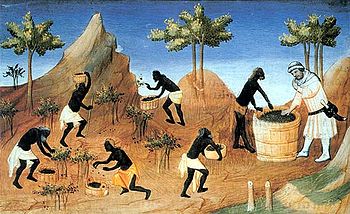
According to the Encyclopædia Britannica 2002: "Ferdinand Magellan took up the quest for Spain in 1519. Of the five vessels under his command, only one, Victoria, returned to Spain, but triumphantly, laden with cloves."
The first Dutch expedition left from Amsterdam (April 1595) for South East Asia. Another Dutch convoy sailed in 1598 and returned one year later with 600,000 pounds of spices and other East Indian products. The United East India Company forged alliance with the principal producers of cloves and nutmeg. The British East India Company shipped substantial quantities of spices during the early 17th century.
According to the Encyclopædia Britannica 2002:
| “ | In 1602 the Dutch East India Company came into existence by authority of the Estates-General of the Netherlands. In 1664 the French East India Company was organized by state authorization under Louis XIV. Other European nations granted charters to East India companies with varying success. There followed struggles and conquests to gain advantage and monopolistic control of the trade. For more than 100 years Portugal was the dominant power, eventually yielding to English and Dutch enterprise and conquest; by the 19th century British interests were firmly rooted in India and Ceylon, and the Dutch were in control over the greater part of the East Indies. | ” |
The growing competition led to rival nations resorting to military means for control of the spice trade. In 1641, Portuguese Molucca was captured by the Dutch. The capture saw concentrated plantation on cloves and nutmegs and then — using the Treaty of Batavia (1652) - an attempt to destroy trees on all other islands in order to keep the supply in check and control the important markets of spices. This attempt disrupted the ancient patterns of trade and even led to depopulation of entire islands, notably Banda.
The Moluccas became the principal entry ports for the spice trade, and according to Robin A. Donkin (2003):
| “ | Trade by Europeans between different parts of South and East Asia was often more profitable than supplying the home countries. In the 1530s, the Portuguese shipped substantially more cloves, nutmegs, and mace to India and Hormuz than to Portugal. The buyers in Hormuz were " Moorish merchants who pass[ed] it on, over Persia, Arabia and all Asia as far as Turkey." From at least the seventeenth century, the same products were taken to Bengal by the Portuguese and the Dutch. English merchants found that they sold "Exceedingly well in Surratt" and other Indian and Persian stations. The Dutch between 1620 and 1740 marketed one-third or more of their spices, notably cloves, in Asia: Persia, Arabia, and India. Japan was served by the Portuguese from Macau and later by the Dutch, but the demand for cloves and spices generally was said in the early seventeenth century to be relatively small and prices were consequently low. | ” |
Penang, a British possession, was established as a pepper port in 1786. During the 18th century, French possessions in India were seized by the British, who then moved on to aggressively check Holland in the Far East. The status of the Dutch East India Company weakened as a result of the growing British influence.
In 1585, ships from the West Indies arrived in Europe with a cargo of Jamaican ginger, a root originating in India and South China, which became the first Asian spice to grow successfully in the New World. Notions of plants and trees not growing successfully outside of their native lands, however, were harbored until the mid 18th century, championed by eminent botanists of the day, such as Georg Eberhard Rumpf (1627–1702). Rumpf's theory was discredited by a series of successful transplantation experiments carried out in Europe and the Malay Peninsula during the early 18th century.
By 1815, the first shipment of nutmegs from Sumatra had arrived in Europe. Furthermore, islands of the West Indies, like Grenada, also became involved in spice trade.
Sandalwood from Timor and Tibetan incense gained status as prized commodities in China during the early 18th century. East Asia displayed a general interest in sandalwood products, which were used to make images of the Buddha and other valuable artifacts.
The mid 19th century saw the advent of artificial refrigeration, which resulted in a decline in the overall status of spice consumption, and trade.
Cultural exchanges
Hindu and Buddhist religious establishments of Southeast Asia came to be associated with economic activity and commerce as patrons entrusted large funds which would later be used to benefit local economy by estate management, craftsmanship and promotion of trading activities. Buddhism, in particular, traveled alongside the maritime trade, promoting coinage, art and literacy. Islam spread throughout the East, reaching Maritime Southeast Asia in the 10th century; Muslim merchants played a crucial part in the trade. Christian missionaries, such as Saint Francis Xavier, were instrumental in the spread of Christianity in the East. Christianity competed with Islam to become the dominant religion of the Moluccas. However, the natives of the Spice Islands accommodated aspects of both religions easily.
The Portuguese colonial settlements saw traders such as the Gujarati banias, South Indian Chettis, Syrian Christians, Chinese from Fujian province, and Arabs from Aden involved in the spice trade. Epics, languages, and cultural customs were borrowed by Southeast Asia from India, and later China. Knowledge of Portuguese language became essential for merchants involved in the trade.
Indian merchants involved in spice trade took Indian cuisine to Southeast Asia, notable present day Malaysia and Indonesia, where spice mixtures and curries became popular. European people intermarried with the Indians, and popularized valuable culinary skills, such as baking, in India. The Portuguese also introduced vinegar to India, and Franciscan priests manufactured it from coconut toddy. Indian food, adapted to European palate, became visible in England by 1811 as exclusive establishments began catering to the tastes of both the curious and those returning from India.
Recent trends
The table below shows total global spice production in 2004 ( Food and Agriculture Organization of the United Nations statistics):
| World Spice Production in tons, 2003–2004, data from FAOSTAT | ||||
|---|---|---|---|---|
| India | 1 600 000 | 86% | ||
| China | 66 000 | 4% | ||
| Bangladesh | 48 000 | 3% | ||
| Pakistan | 45 300 | 2% | ||
| Turkey | 33 000 | 2% | ||
| Nepal | 15 500 | 1% | ||
| Other countries | 60 900 | 3% | ||
| Total | 1 868 700 | 101% | ||
